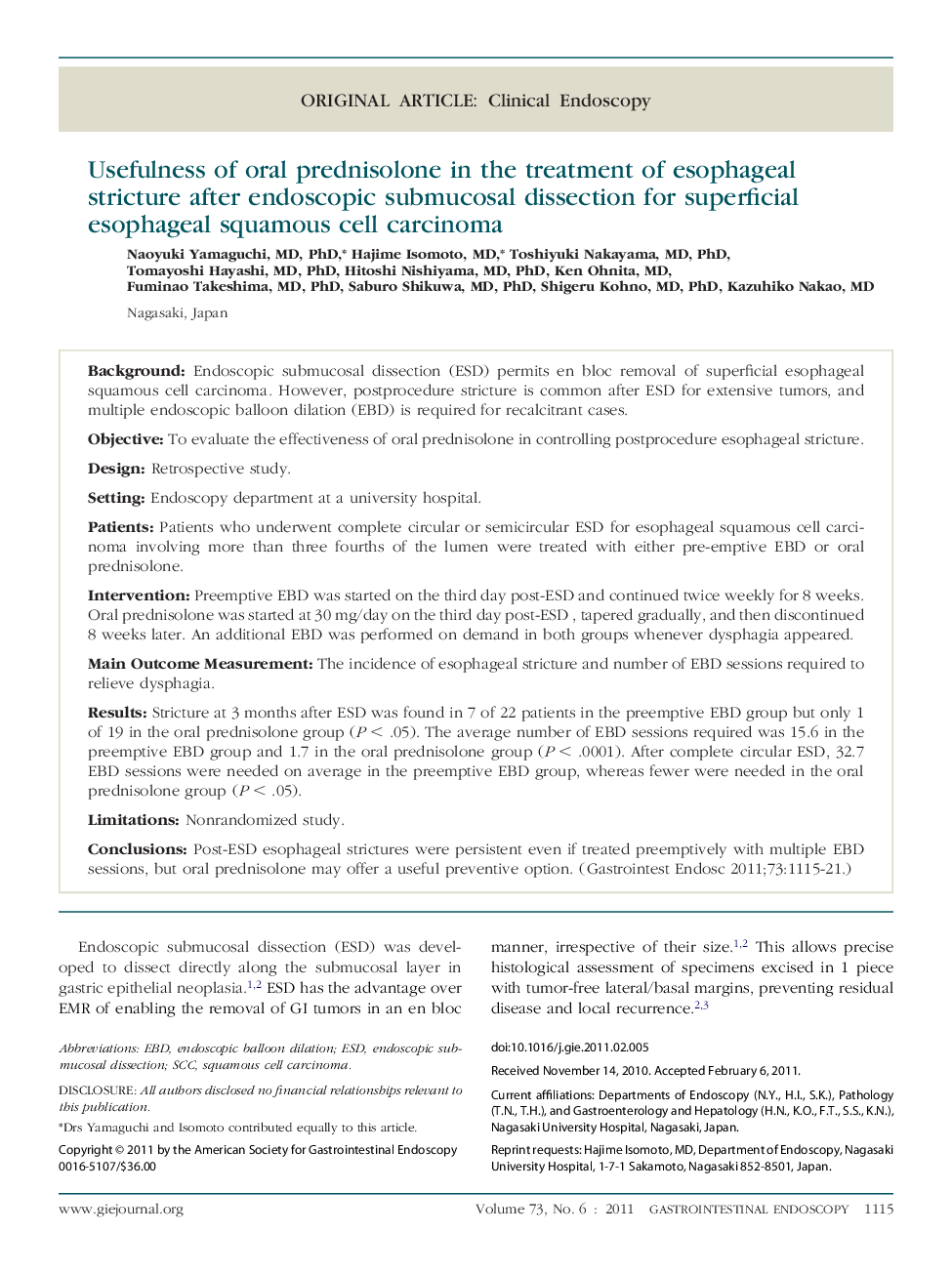| Article ID | Journal | Published Year | Pages | File Type |
|---|---|---|---|---|
| 3303831 | Gastrointestinal Endoscopy | 2011 | 7 Pages |
BackgroundEndoscopic submucosal dissection (ESD) permits en bloc removal of superficial esophageal squamous cell carcinoma. However, postprocedure stricture is common after ESD for extensive tumors, and multiple endoscopic balloon dilation (EBD) is required for recalcitrant cases.ObjectiveTo evaluate the effectiveness of oral prednisolone in controlling postprocedure esophageal stricture.DesignRetrospective study.SettingEndoscopy department at a university hospital.PatientsPatients who underwent complete circular or semicircular ESD for esophageal squamous cell carcinoma involving more than three fourths of the lumen were treated with either pre-emptive EBD or oral prednisolone.InterventionPreemptive EBD was started on the third day post-ESD and continued twice weekly for 8 weeks. Oral prednisolone was started at 30 mg/day on the third day post-ESD , tapered gradually, and then discontinued 8 weeks later. An additional EBD was performed on demand in both groups whenever dysphagia appeared.Main Outcome MeasurementThe incidence of esophageal stricture and number of EBD sessions required to relieve dysphagia.ResultsStricture at 3 months after ESD was found in 7 of 22 patients in the preemptive EBD group but only 1 of 19 in the oral prednisolone group (P < .05). The average number of EBD sessions required was 15.6 in the preemptive EBD group and 1.7 in the oral prednisolone group (P < .0001). After complete circular ESD, 32.7 EBD sessions were needed on average in the preemptive EBD group, whereas fewer were needed in the oral prednisolone group (P < .05).LimitationsNonrandomized study.ConclusionsPost-ESD esophageal strictures were persistent even if treated preemptively with multiple EBD sessions, but oral prednisolone may offer a useful preventive option.
